You are in La Paz and wondering whether you should cycle the (in)famous Death Road or not? If you are scared, that’s normal. This road has this horrible name for a reason and cycling it is no joke. But, at the same time, you know it’s a once in a lifetime thing. Nobody can make that decision for you, but here are some info that might help you decide.
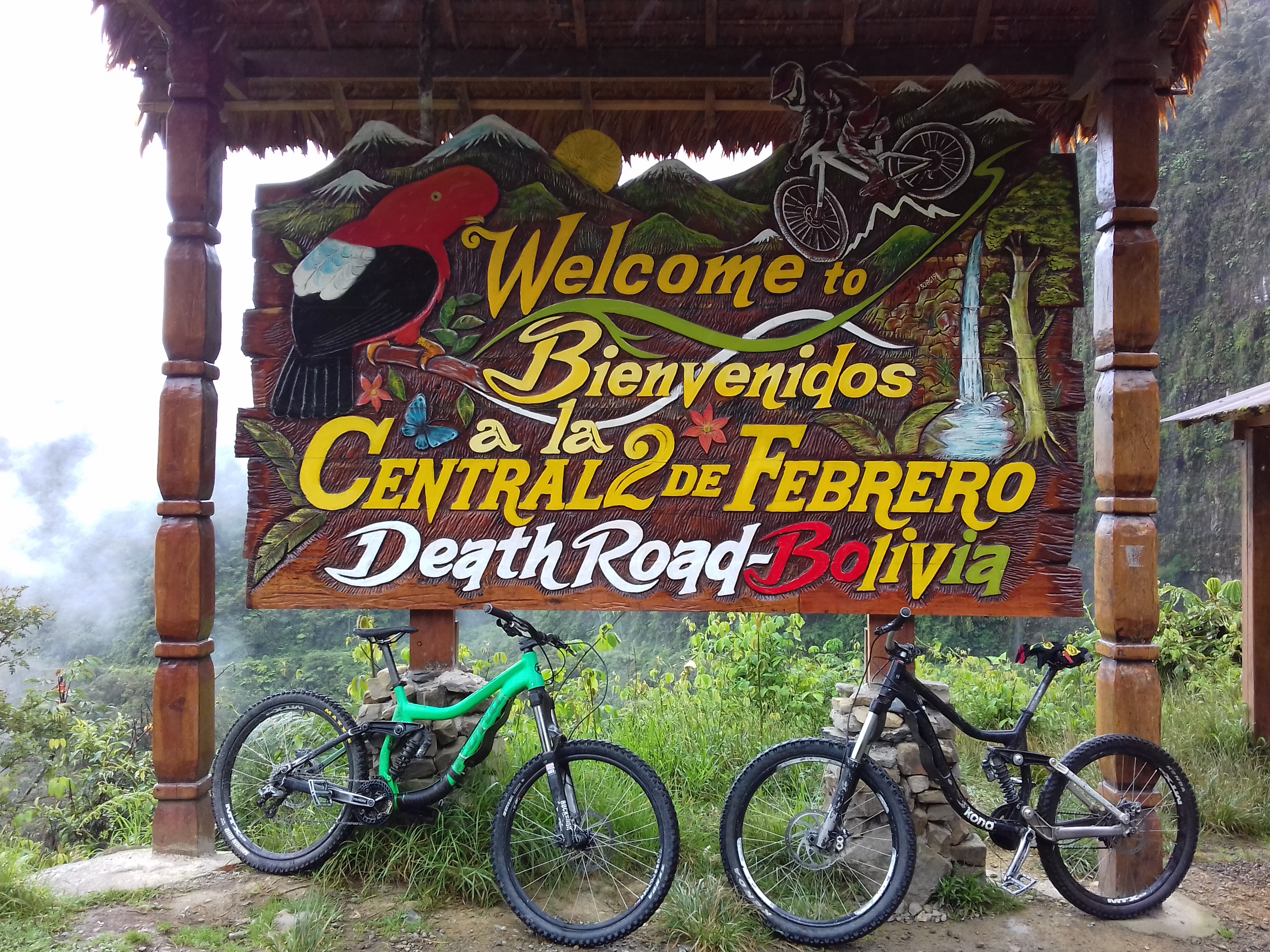
In this post you will find:
- Some fact about Death Road
- Why you should do it (or not)
- Is it suitable for people with little to absolutely no mountain biking experience?
- Picking your company
- The itinerary
Some facts about Death Road
The actual name of this road is the North Yungas Road. This route was built to connect La Paz with Las Yungas and the Amazon by prisoners from Paraguay from the Chaco conflict, all the way back in the 30s.
As an estimated 300 people die here per year, this route was declared the most dangerous road in the world in 1995. However, today this road is rarely used, if not by tourists and backpackers cycling here, and people use the new road built in 2006 between La Paz and Coroico to get around instead.
In 1995, the Interamerican Development Bank declared it the “World’s Most Dangerous Road“, an unenviable moniker which is still in use today. An estimated 300 people per year perished here before construction of a newer road between La Paz and Coroico was completed in 2006.
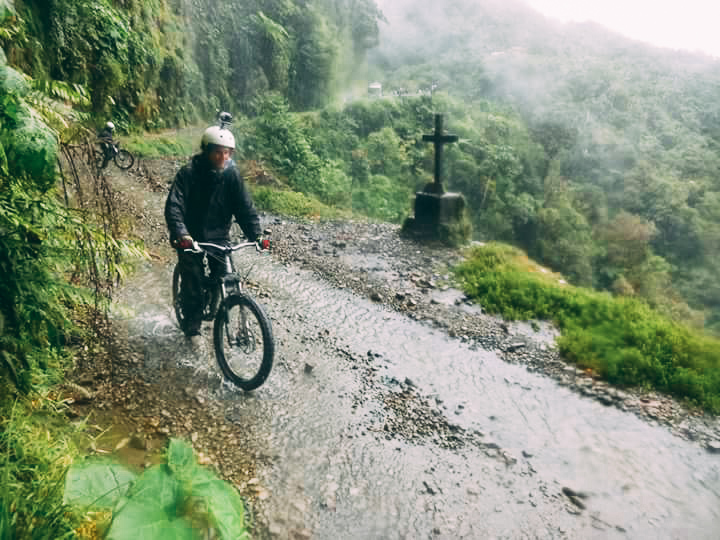
This incredible road is 64 km long, so this adventure will be quite a long day – you will most likely leave at 6am and be back at 9pm. Moreover, with a 3,500 m descent, the climate will very a lot: you will descend from the snowy and cold Andes mountains, where it’s so warm and humid. For this reason it’s a good idea to dress with layers that you can take off as you go and as it gets warmer.
Another interesting and important thing to bear in mind is that, unlike in all other parts of the country, you will actually have to travel on the left side of the road. This is because, although people try to use the new road, there are still cars and trucks using this road today, so this way, they can stick to the side of the mountain, rather than the cliff. While this makes it safer for vehicles, it mean that the people cycling downhill are just along the cliff, so just try to be extra careful.
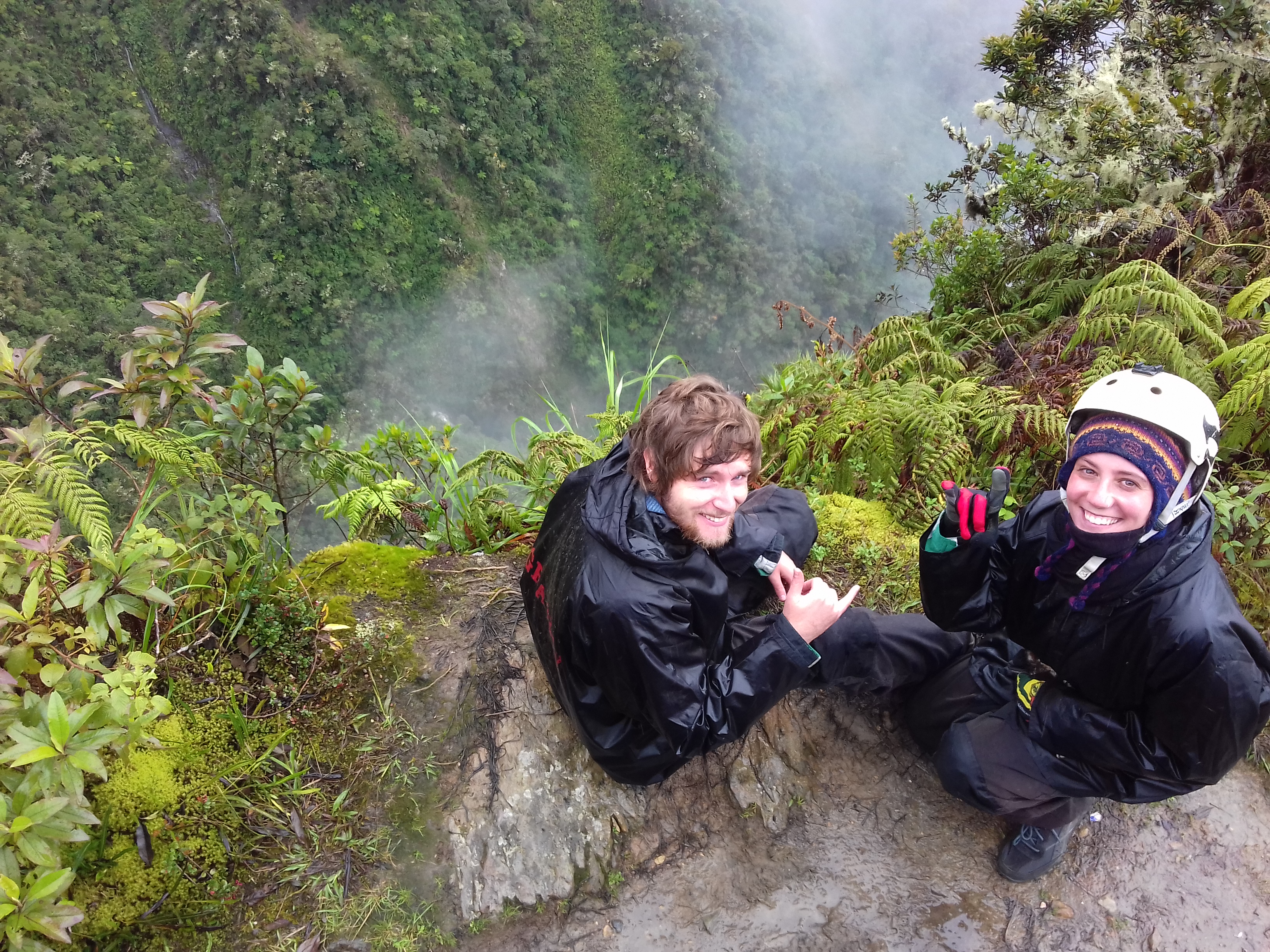
Should you do it?
From the start, I was never too sure I wanted to do this, first and foremost because, like I said here, I hadn’t cycled in almost 20 years, not even on a normal or flat road!
The reasons why I decided to do it, and why I would suggest people do it are mainly the incredible view and the fact that it really is a once in a lifetime experience.
You will start your ride at almost 5,000 m above sea levels, in the heart of the Andes, and you will descend all the way to the jungle. It goes without saying that the landscape changes dramatically during your ride, and you will see some amazing spots. On the way, you will also get to cross some streams and cycle through some waterfalls.

The other reason why I really wanted to do is because I knew I was probably never going back to La Paz and I didn’t want to miss this unique opportunity – after all this place is so famous and I really wanted to be able to say I was. there one day.
On the other hand however, going back, I don’t know if I would do it again! No reason is strong enough if you don’t feel safe or you think you would panic once you get there. Bolivia has so many other amazing spots and adventure, that you don’t need to do this one if you don’t want to.
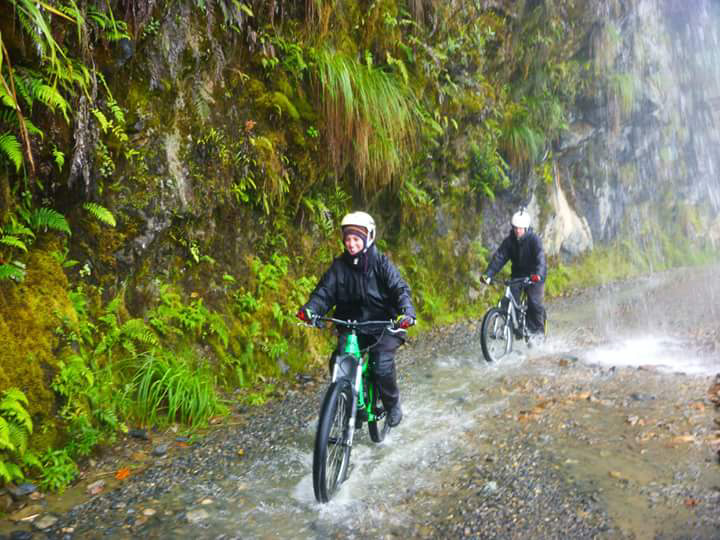
Is it suitable for people with little to absolutely no mountain biking experience?
Like I said above, not only I didn’t have any mountain biking experience at all, but also almost no cycling experience in general. The last time I was on a bike (with the exception of Machu Picchu approximately a month before this), it was in 1999, so if I survived it, i think pretty much everybody that has cycled a bike before can. The trick is to choose a good tour company, but I will talk about this in the next point.
The important thing to remember is that you are not competing with anybody, so you should always go at your own pace – even though other people go flying next to you (which I’m not sure is a good idea anyway) or if you see you are miles behind. The slower you go, the more you can enjoy the pretty landscape.
It’s also okay to take as many breaks as you want and to even ride some of the length of the road on the van of your tour. Bear in mind though that this is much scarier than cycling: after my fifth fall, I asked to go on the van to rest a little, but while there definitely is enough space for a bike to be on the road, the van seems to be always falling off the cliff, so I asked to get off and cycle again after less than 20 minutes!
Since the path is all downhill, I didn’t have too many difficulties, considering I am a non-expert cyclist. The parts I found the hardest where the ones where you had to cycled through streams or try to avoid big rocks. However, after the first few falls (you will be given a lot of protecting gear, so it really doesn’t hurt), I chose to get off the bike and actually walk through these parts.
Picking your company
Death Road is not one of the torus you want to safe on. There are a few good companies that put safety first, and we heard that Gravity and Altitude are very good. However, we decided to go with Barracuda, after some friends recommended it to us.
With Barracuda you have the option to choose between a front suspension bike for 450 BOB (or 60 euro) or a full suspension bike for 570 BOB (or 80 euro). We picked the second option, but no matter what bike or tour company you pick, it’s a good idea to always check your equipment before starting the real Death Road (there is a piece of asphalted road at the start where you can practice. On top of this, you have to pay 25 BOB as an entrance fee to the road.
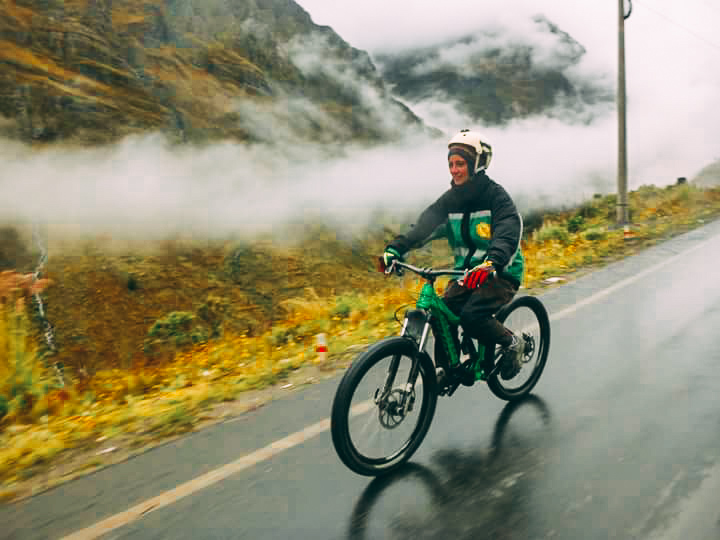
Our tour included, besides the bikes, other safety equipments, like a full black suit, knee and elbow pads and a helmet, various snacks and drinks during the day (including vegetarian and vegan options), transport to the place and back, and a buffet lunch with many different options in an incredible location in the jungle with a swimming pool.
The itinerary
Before you start the ride, just like you would do for everything else in Bolivia, you will need to pay a tribute to the Pachamama, or Mother Nature: this consists in drinking a drop of some weird alcohol thing and then pour a drop to the ground and ask the Pachamama for protection.

Thee itinerary starts in La Cumbre, at 4,700m above sea level. The first part will be a paved road, where you can practice and test your gear and bike. You will soon start riding on the dirt road part of the itinerary, passing different water streams and waterfalls, including the San Juan Waterfalls. You will also stop at the Cerro Rojo viewpoint, to enjoy an incredible view.
The tour ends in Yolosa, where you can have a hot shower and a buffet lunch in the house of a local sculptor. After lunch, the tour drives back to La Paz (using the new and safer road).
YOU MIGHT ALSO LIKE:
- Top things to do in La Paz
- Crossing into Bolivia
- The two sides of Lake Titicaca – Puno vs Copacabana
- Top things to do in Copacabana
- Crossing into Peru
- All my destinations in Bolivia
- My year long backpacking trip
- Big Cities

Thank you for this honest testimony of the Death road experience. I hesitated during my stay in La Paz, hiding behind the lack of time to cowardly avoid this experience. My main hesitation was due to the difficulty of the physical effort at high altitude before several days of adaptation. It took me two days to get used to the altitude of La Paz, I guess it takes a bit more to feel comfortable at 4700 meters.
By the way, thank you for visiting my site, I also published a first short article on Bolivia, more to come.
Thank you! I hope it can help people decide whether to do it or not. You made the right decision not to do it if you didn’t feel like it…there are so many other amazing things to do in Bolivia anyway!
I also took a look through your South America posts…amazing! 🙂
This looks fun! Good idea on the upgrading to the full suspension.
Yes, it’s better to be safe… 😀
Pingback: 9 things to do to enjoy all the beauty of Sucre – Travel Notes
Pingback: Should you visit the Potosi Silver Mines? – Travel Notes
Pingback: Cycling Death Road in Bolivia: All you need to know — Travel Notes – Truth Troubles
Pingback: Uyuni Salt Flats pt. 2 – Things you need to know – Travel Notes
Pingback: Uyuni Salt Flats pt. 1 – The Tour – Travel Notes